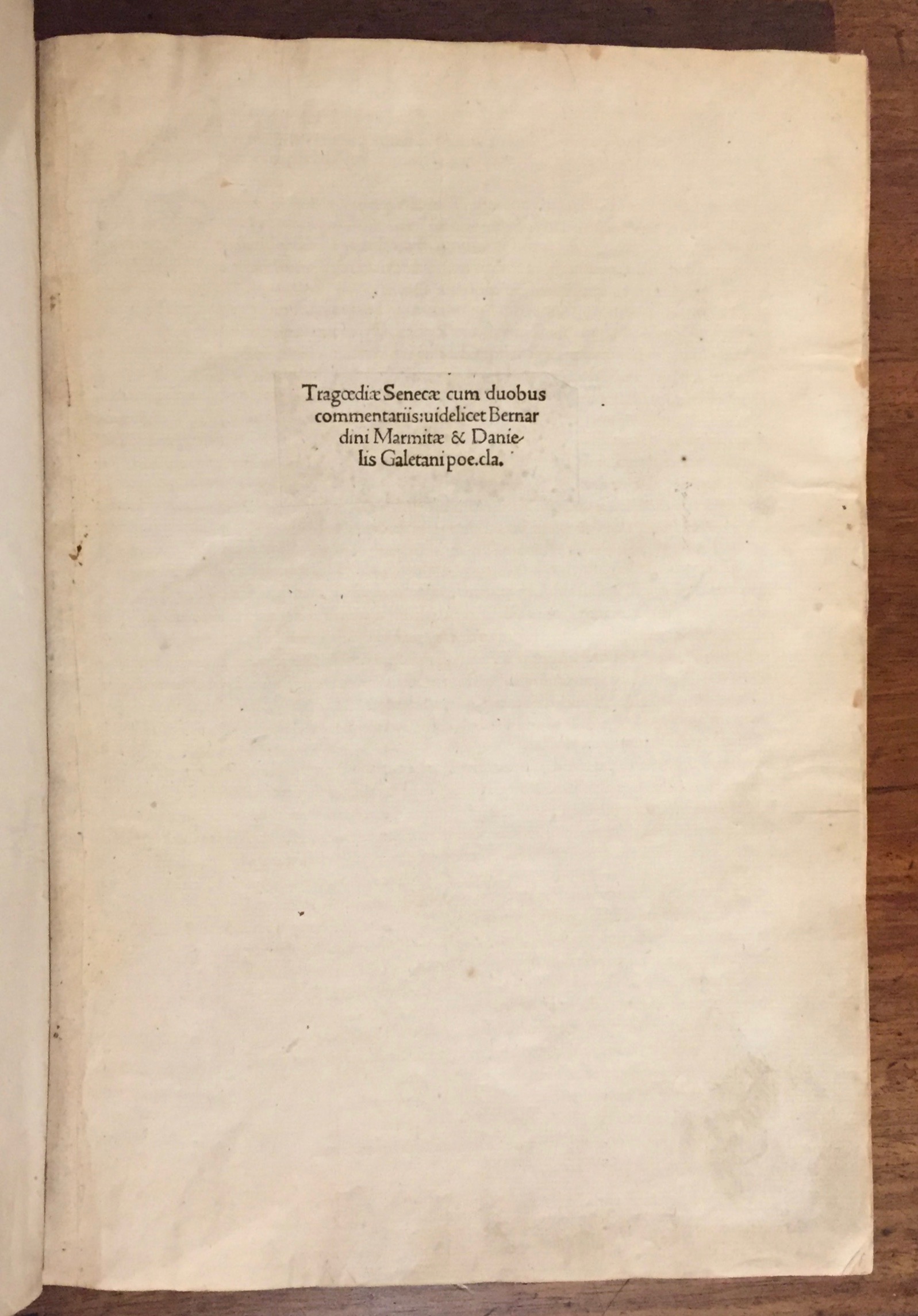In 1633 the Benedictine Abbey of Muri, near Basel, was flourishing under Dom Johann Jodok Singisen. His abbacy (1594-1644) saw the creation of a library over the porch of the abbey church. Into that library came a little vellum volume, telling of a distant land, to warm the hands of a black-habitted monk:
Note the ownership inscription at the bottom: "Mn'rÿ Muren."
Johannes de Laet. Persia seu Regni Persici Status. Variaque Itinera in atque per Persiam: cum Aliquot Iconibus Incolarum. Leiden: Elzevir, 1633.
De Laet was one of the founding members of the Dutch West India Company, corollary to the more infamous East India Company; the WIC had dominion over West Africa and the Americas. De Laet never went to Persia, but his learning was wide. A student of Joseph Scaliger, he deciphered and published an early history of Brazil, published a book on gems modelled on Theophrastus’ and edited Pliny’s Natural History. In brief, he was one clever fellow, and he thought New York was swell, so we count him as a Friend of the Shop.
Persia is split into two parts: de Laet’s own musings on the country — its topography and climate, mores, history, κτλ. — and a compendium of eleven other travelers’ accounts. I’m now reading Robert Byron’s Road to Oxiana — a gift to me from book-man plenipotentiary and Friend of the Shop, Thos. W- - - — and my mind’s eye is awash with visions of traceried mihrabs and minarets.
Imagine what the Benedictine monk at Muri must have thought when looking at the fantastical costumes he saw, reading of proskynesis and Mohammed and mosques. Heathenry! Or, perhaps, how lovely to wear feathers on one’s head. The engravings, executed by Cornelis Claeszoon Duysend, doubtless contributed to the publication of a second issue that same year; our copy, happily, belongs to the first issue.
Trimmed down to fit in the hand — our copy preserves a folded deckle-edge, giving a sense of the original sheet size
— one can imagine a monk slipping this into the fold of his habit and in his cell muttering the names of implausible places — Firusabad, Schiraz, Hispahan, Bestân, Ardshir — like inchoate prayers.
This book combines the two great genres of travel-writing, the arm-chair and the saddle-back, to arrive at a work of real erudition and insight. De Laet draws on the 1600 account of the Portuguese traveler Pedro Teixeira, which is itself a translation, more or less, of Mir Khwand’s 1497 Gardens of purity in the biography of the prophets, kings and caliphs, which is itself a compilation of… In short, we oughtn’t to malign De Laet’s work simply because he never went to Persia. By offering the autoptic accounts of others — from the mid-XVc Venetian traveler Giosafat Barbaro through to the Dutchman Nicholas Hem, whose journey was only published some ten years prior — he offers the reader both perspective and immediacy. His Latin is vigorous and clear, and he writes with the dispassion of a man who has no desire to travel thither.
Persia bellowsed the monks’ furnaces until the abbey at Muri was dissolved in 1841. Its library was dispersed, and this little volume found its way to the cantonal library of Aargau, where, most cruelly, it was stamped as a “Doublette” and, presumably, “de-accessioned,” as libraries getting rid of books wish to call it. Fortunatus et ego deos qui novi persicos.
Collation
Small octavo (4 5/16” x 2 1/4”, 111mm x 57mm). A-Aa^8 [$5]. 192 leaves, pp. 1-2 3-30 31 32 33 34 35 36-72 73 74-119 120-121 122-137 138-139 140-192 193-194 195-374, [8], 2 blanks.



